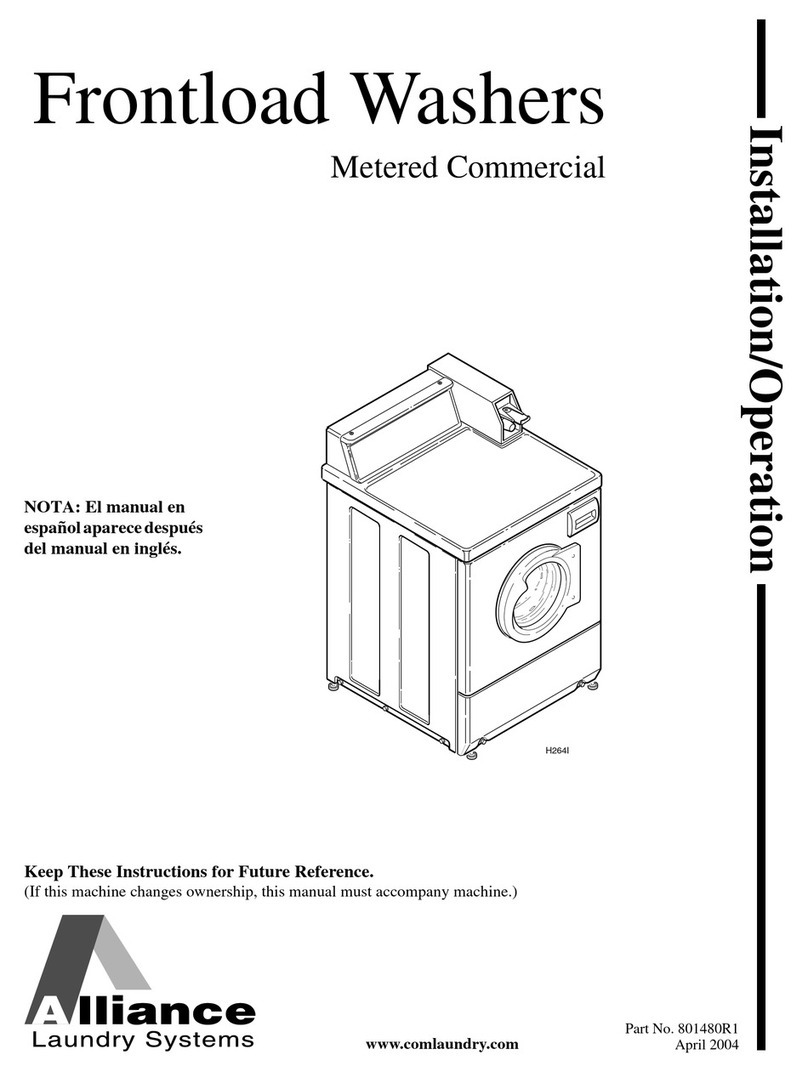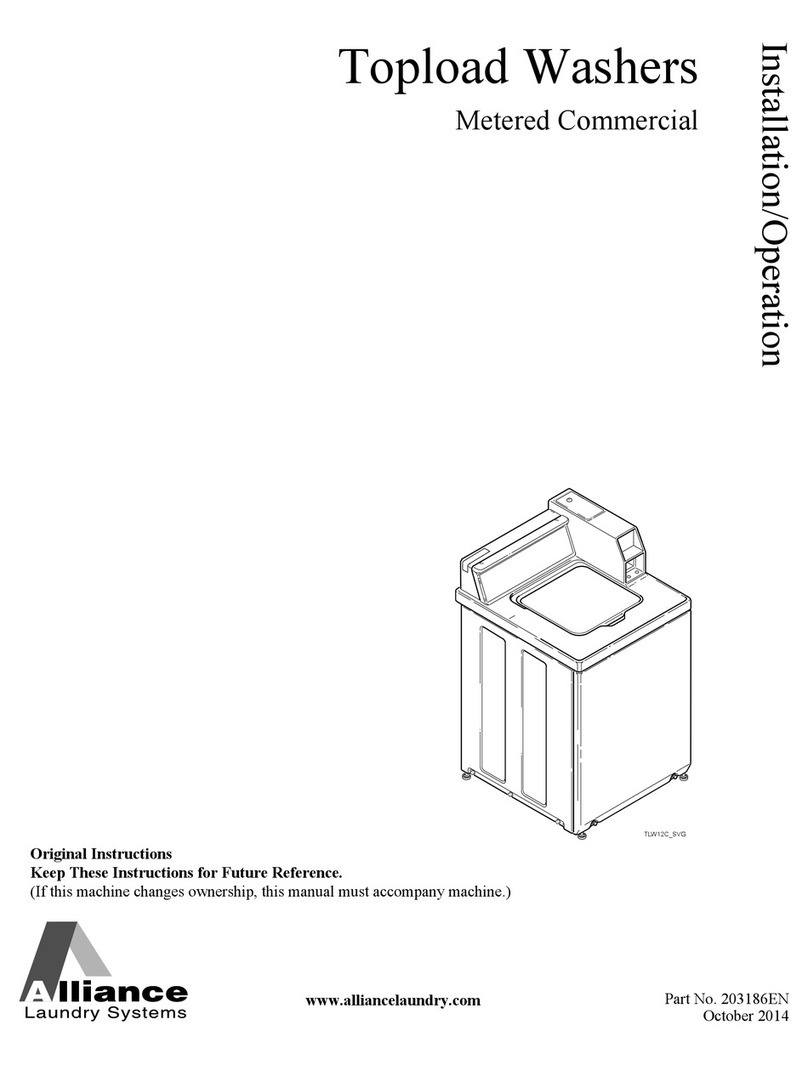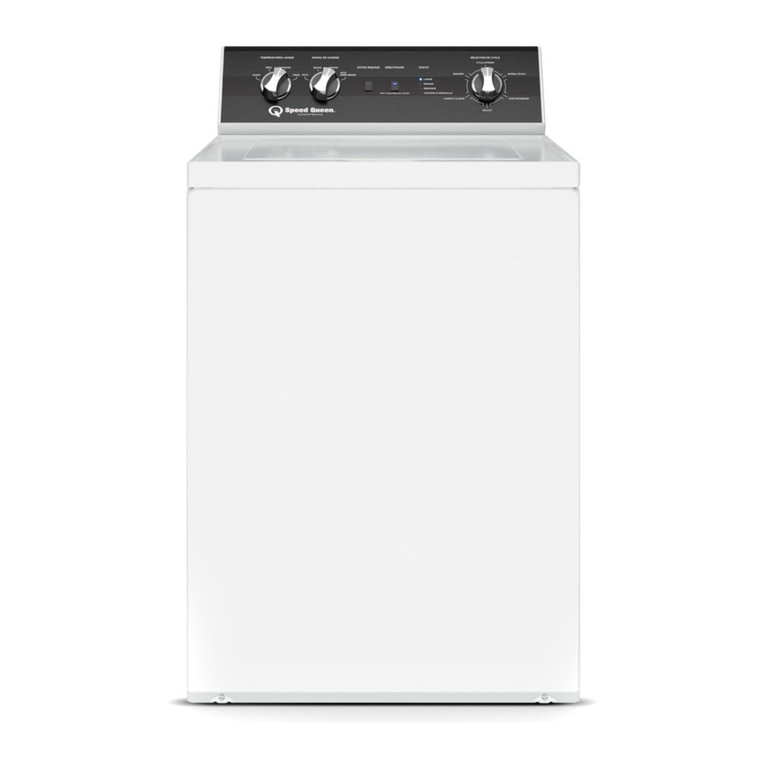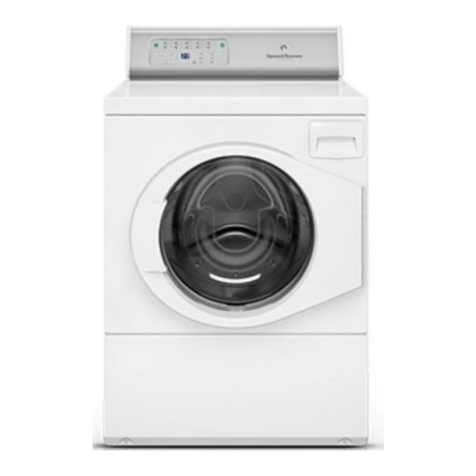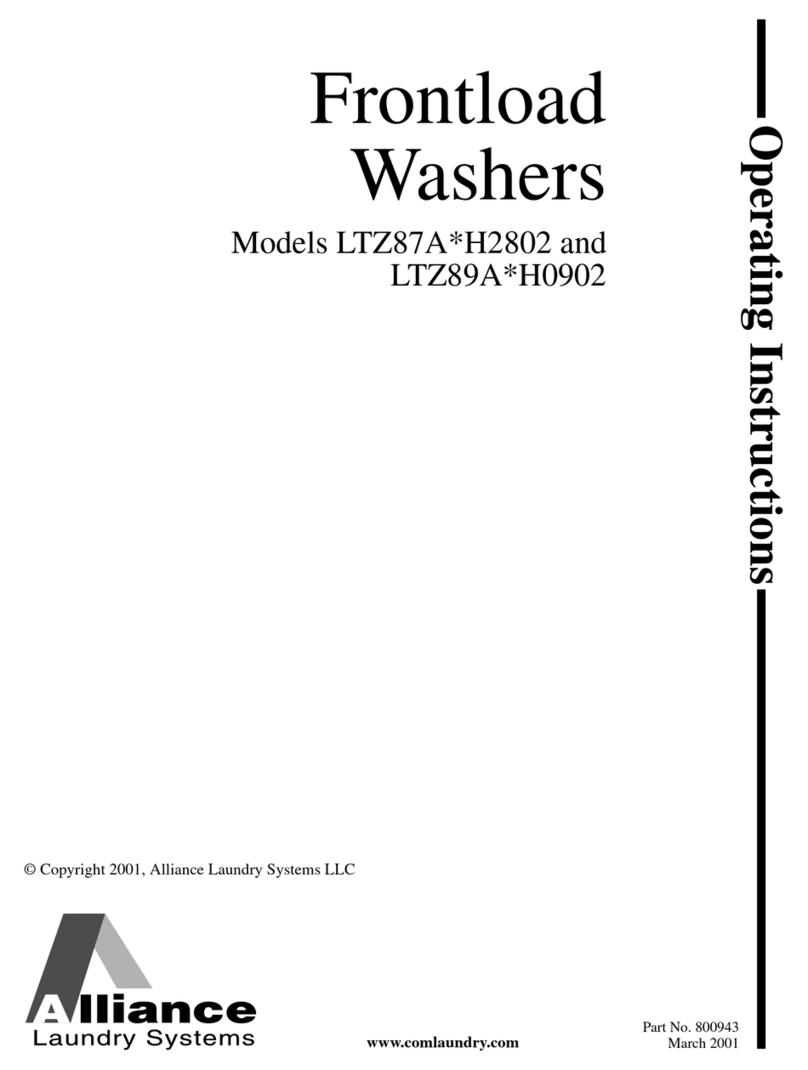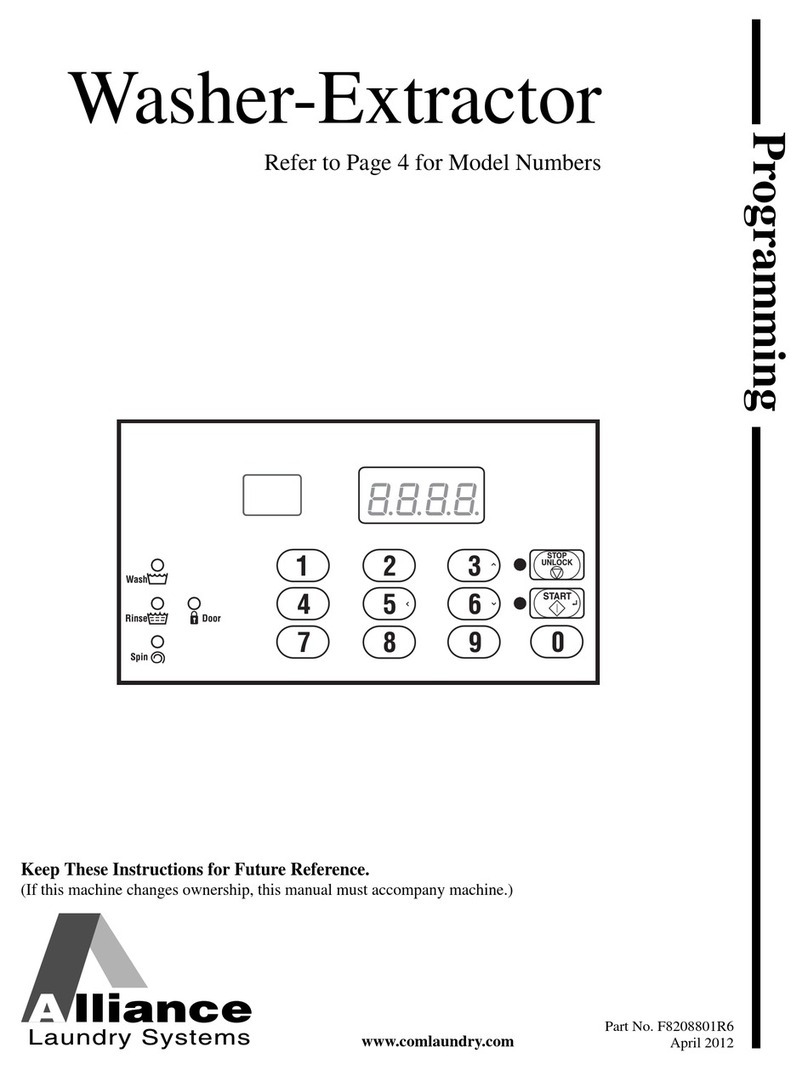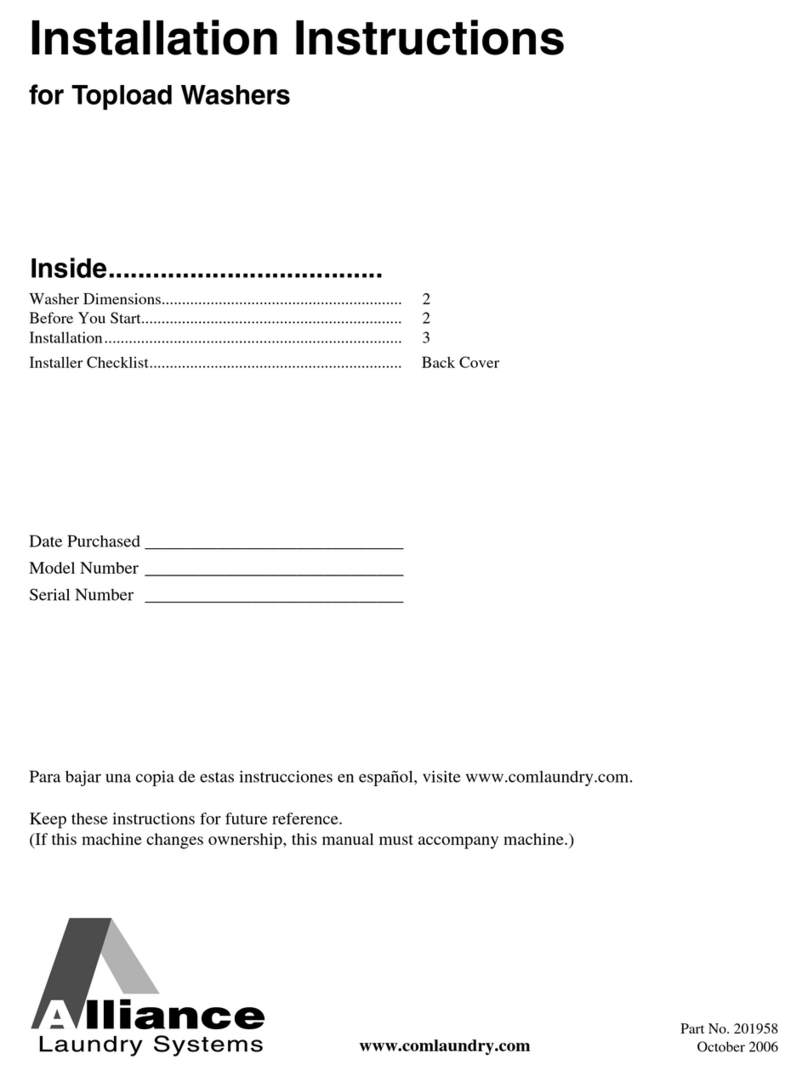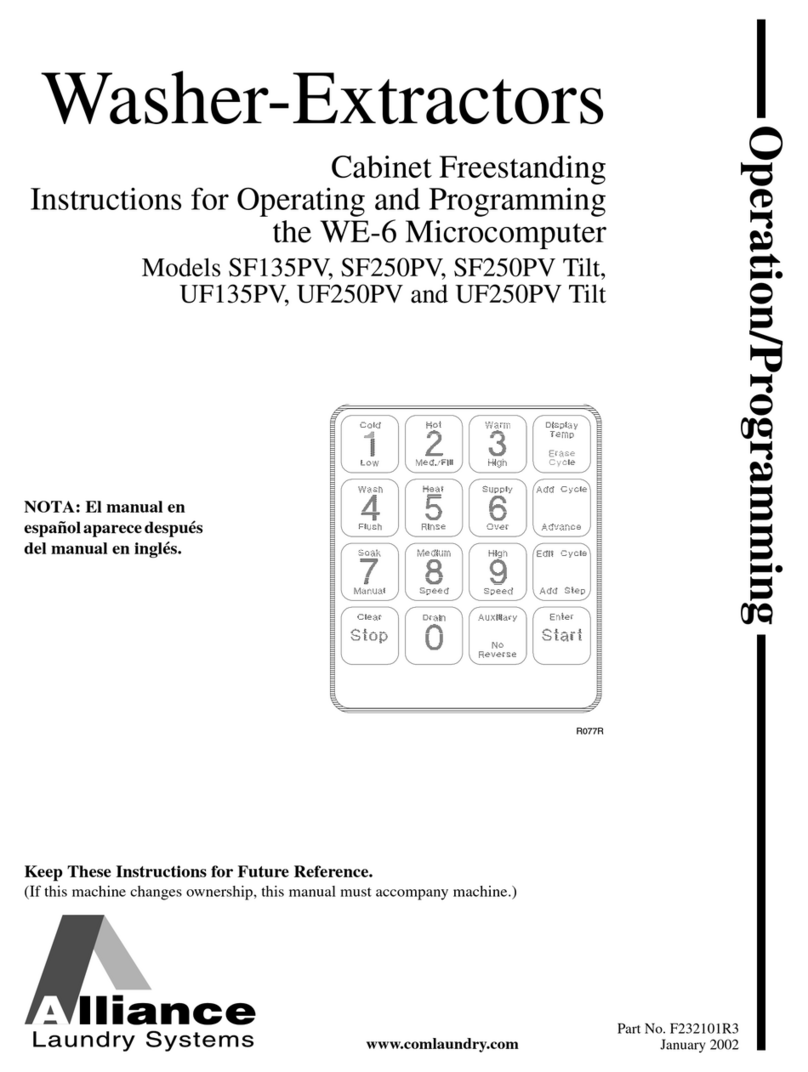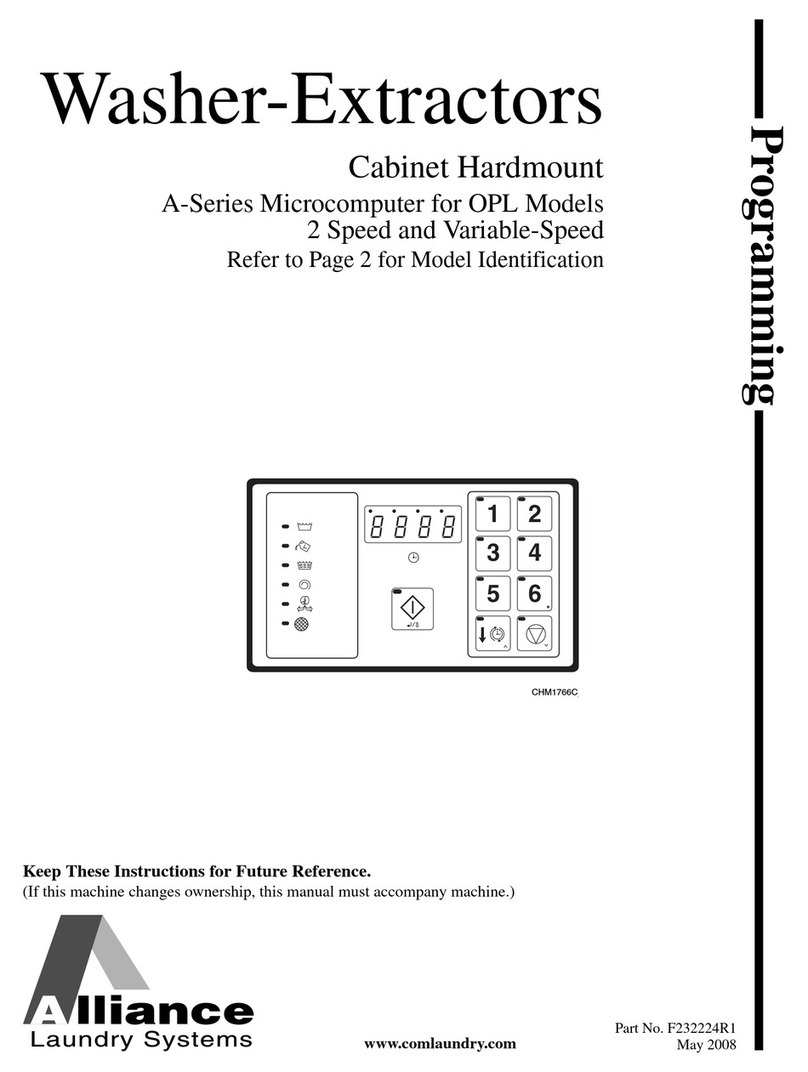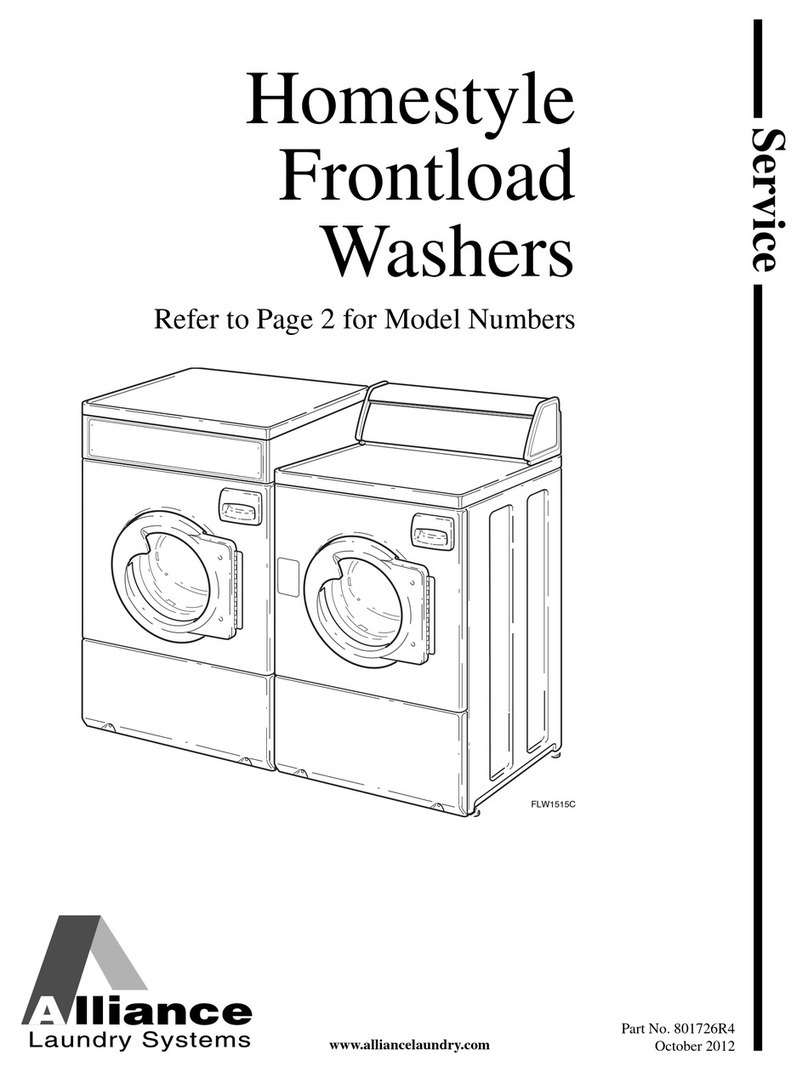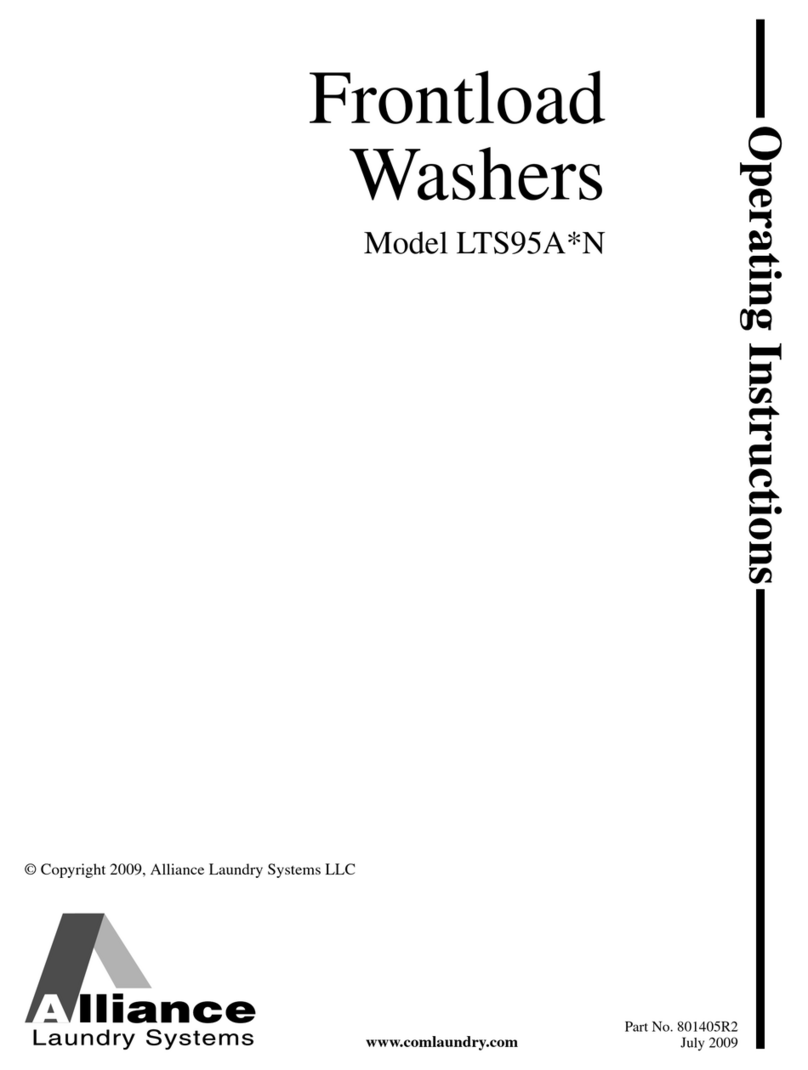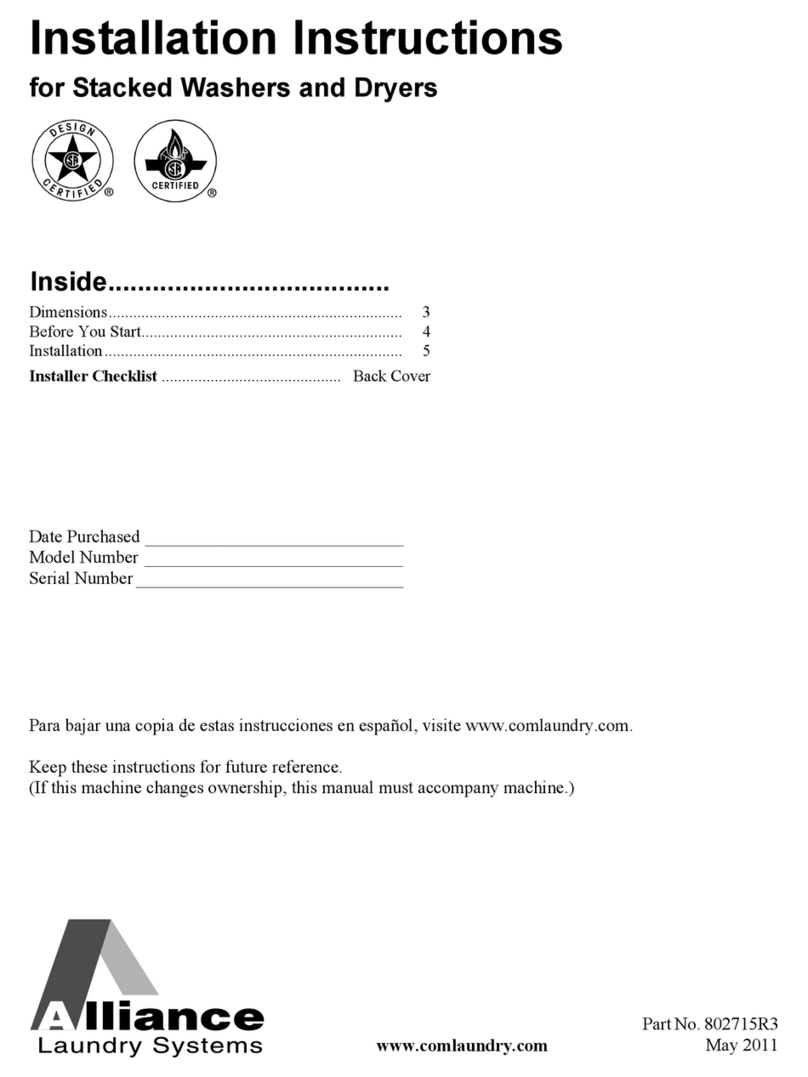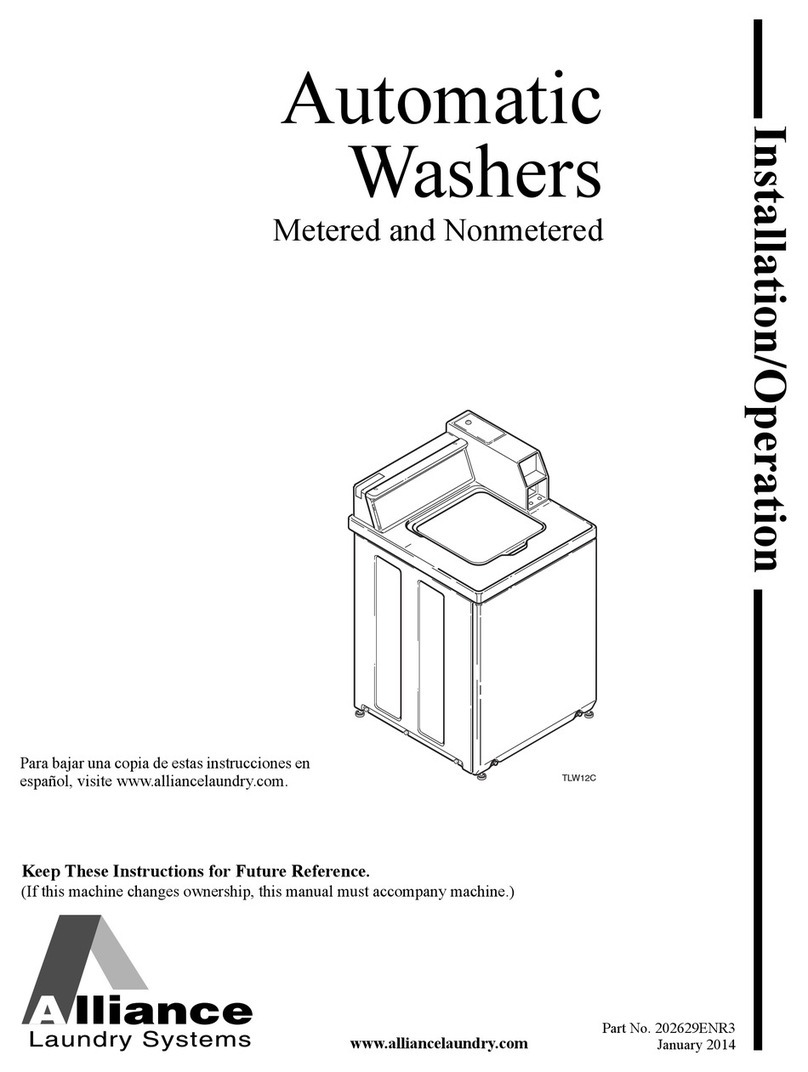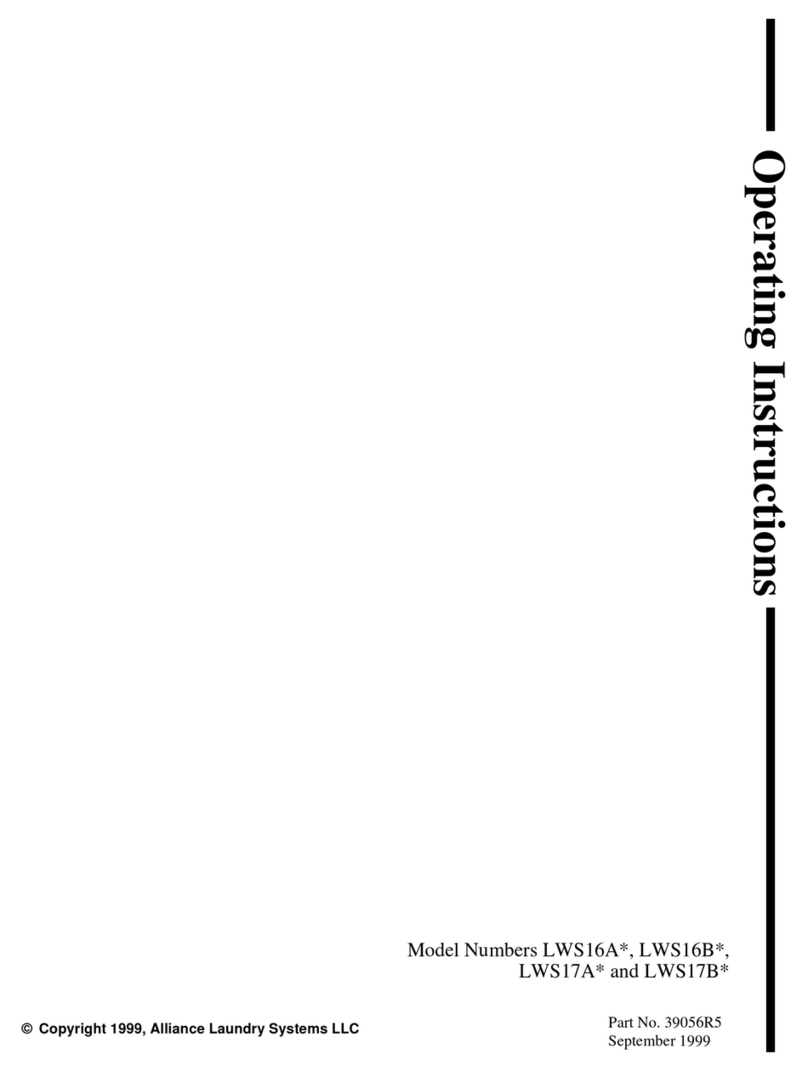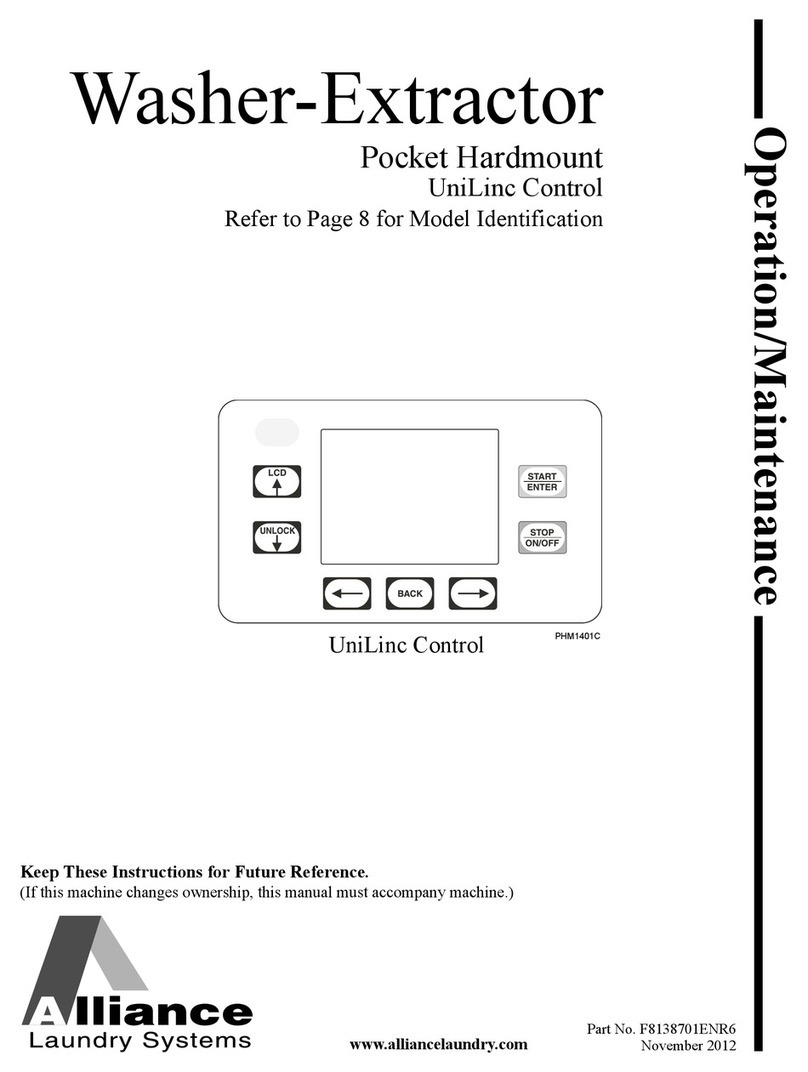
• The washer must be set up in accordance with the instruc-
tions. All drain, inlet, electrical connections, ventilation,
groundings and other connections must be done in according
to the installation manual, in compliance with the local stand-
ards done by qualified technicians with proper authorization.
• The valid standards for connecting to the local power network
(TT,TN,IT,…) must be followed. In the standard execution,
the appliance may not be suitable for connecting to an IT sup-
ply system. Contact your commercial distributor for assis-
tance.
• All appliances are produced according the EMC-directive
(Electro-Magnetic-Compatibility). They can be used in re-
stricted surroundings only (comply minimally with class A re-
quirements). For safety reasons there must be kept the neces-
sary precaution distances with sensitive electrical or electron-
ic device(s). These machines are not intended for domestic
use by private consumers in the home environment.
• Do not change the parameters of the frequency inverter. This
can cause serious injury, fire, washer damage, etc.
• During transportation and storage never use excessive forces
on the packing because components can be damaged protrud-
ing the contour line of the appliance.
• Use copper conductors only. This appliance must be connec-
ted to a supply circuit to which no lighting units or general-
purpose receptacles are connected.
• Any changes concerning the installation which are not descri-
bed in this Installation Manual must be approved by the sup-
plier or manufacturer. Otherwise, the supplier and manufac-
turer are not responsible for potential injuries to operators or
for any damages. Interventions in the appliance execution or
functions are not allowed, and the manufacturer refuses any
responsibility in such cases.
• The washer extractor must be installed on level. If not, the
washer may become unbalanced during extraction and, al-
though fitted with an unbalance safety, the washer may be-
come seriously damaged what may result in bodily injuries.
• Never put the washer in operation when the transporting bra-
ces are not removed. The washer should always be tested be-
fore use.
• It is possible that there are residues of products used during
the production process in the new washer. These residues
could cause stains on your laundry. Therefore, you must first
run at least 1 hot wash with old rags before using for your
normal laundry.
• Keep the appliance top and surface and the area around clean
and clear of combustible or flammable products.
• The use of hypochlorite will cause corrosion which may cause
component failure under certain circumstances.
• The warranty of the machine cannot be accepted in case cor-
rosion was caused by chlorine and chlorine compounds im-
pact.
• The washer extractor is not designed for work which may cre-
ate an explosive atmosphere inside the machine and will not
be used for this purpose.
• Do not expose the washer extractor to the weather, extreme
low or high temperature and humidity.
• Do not store flammable materials around the appliances. De-
fine the dangerous areas in the laundry room and obstruct an
admission to them during appliances operating.
• Do not wash articles that have been previously cleaned in,
wash in soaked in, or spotted with gasoline, dry-cleaning sol-
vents, or other flammable or explosive substances as they
give off vapors that could ignite or explode. Such fabrics must
first be washed by hand and air dried.
• Do not add gasoline, dry-cleaning solvents, or other flamma-
ble or explosive substances to the wash water. These substan-
ces give off vapors that could ignite or explode.
• TEMPERATURE IN WASHING MACHINE TUB: The elec-
tronic controller uses the temperature sensor in the tub to con-
trol the temperature of the washing bath. There are a lot of
things that have influence on the temperature measurement.
Therefore the temperature control of the washing bath is not
very precise.
• Always strictly comply with the instructions that are written
on the laundry chemicals-, laundry aids-, dry-cleaning sol-
vents- and disinfectants packaging to avoid personal injury.
• Do not tamper the washer-extractor controls and do not by-
pass the safety instructions and the warnings.
• By danger turn off the main switch or other emergency dis-
connection devices.
• Do not put some part on the soap dispenser lid to held it open
by filling or when the machine operates.
• Do not open the soap dispenser lid after the machine is star-
ted. The discharge or splashing of hazardous liquid can cause
serious scalding and burning.
• Do not operate the appliance when parts are broken or miss-
ing or when covers are open. The appliance must not be oper-
ated until the fixed guards are put correctly in place.
• The appliance must not be stored, installed or exposed to the
weather, extreme low or high temperature and humidity lev-
els. Do not hose down the washer. NEVER allow the appli-
ance to get wet. Avoid damp conditions where water or mois-
ture could run down the walls and covers of the washer or
cover the floor around the washer. Do not install the washer
above an open gutter. Close any nearby gutters so that waste
water steam cannot collect near/inside the washer.
• Check the functioning of the door lock mechanism on regular
base. NEVER bypass the doorlock mechanism.
• To avoid premature bearing failure, do not operate the ma-
chine while the basket is empty.
• Disconnect the power and close all water and steam supply
before cleaning, servicing and at the end of each operating
day.
• Vapour or hot air can escape out of the venting. Do not cover
the vent but protect it sufficiently. It serves air gap and as a
vapor outlet to prevent pressure building in the washer.
• Do not repair or replace any part of the appliance or attempt
any servicing unless specifically recommended in the service
manual or published user-repair instructions that you under-
Safety Information
© Copyright, Alliance Laundry Systems LLC -
DO NOT COPY or TRANSMIT
5 Part No. D2269ENR6
